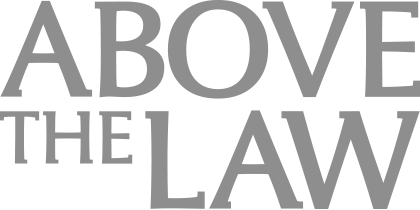Border Protection ... For Design Patent Infringement?
Hit toys deserve secure borders, and no kid should get a cheap knockoff.
 The holiday gifting season is upon us. As any parent of young children knows, it seems that each year brings with it the must-have toy of the season, as with the hoverboard craze of a few years ago, or the Tickle Me Elmo mania that gripped the country back in 1996. In this age of mobile phones and third-party selling on platforms on Amazon, it is not hard to imagine that a phenomenon like Tickle Me Elmo would be hypercharged in the current environment, even as online shopping would provide less fodder for newscasts hoping to run video of hysterical parents storming the doors of the local Target at some ungodly hour on Black Friday. While I can’t claim to know what the hit toy or toys of 2019 will be, I can certainly bet with confidence that at least some of them will be imported from countries such as China. Along with a host of counterfeit or “replica” items that may not be exact copies but are perhaps good enough to pass muster with an overtired 4-year old at a busy Christmas or Hanukkah party. Until they get teased for having a “weird” one when they show the knockoff to a friend.
The holiday gifting season is upon us. As any parent of young children knows, it seems that each year brings with it the must-have toy of the season, as with the hoverboard craze of a few years ago, or the Tickle Me Elmo mania that gripped the country back in 1996. In this age of mobile phones and third-party selling on platforms on Amazon, it is not hard to imagine that a phenomenon like Tickle Me Elmo would be hypercharged in the current environment, even as online shopping would provide less fodder for newscasts hoping to run video of hysterical parents storming the doors of the local Target at some ungodly hour on Black Friday. While I can’t claim to know what the hit toy or toys of 2019 will be, I can certainly bet with confidence that at least some of them will be imported from countries such as China. Along with a host of counterfeit or “replica” items that may not be exact copies but are perhaps good enough to pass muster with an overtired 4-year old at a busy Christmas or Hanukkah party. Until they get teased for having a “weird” one when they show the knockoff to a friend.
As is the case with all profitable items, the brand owners importing this season’s hot toys have an interest in policing infringing or counterfeit goods using whatever tools they have at their disposal. Due to the compressed nature of the holiday shopping season, however, traditional legal avenues like lawsuits or letter-writing campaigns are not promising in terms of delivering results that can help keep an original brand owner as the only source of the hit item. Especially in this age of overnight knockoffs and online direct-to-customer express ordering and shipping.
In short, brand owners looking to maximize their profits from a short-lived hit item (as well as brand owners who sell perennially popular items year-round) have an interest in getting more immediate results when they attempt to enforce their intellectual property rights. Particularly where the prime sell-through life of the product will have passed in the amount of time it would take just to get to an initial conference in a filed lawsuit, for example.

Tackling Deposition Anxiety: How AI Is Changing The Way Lawyers Do Depositions
Complicating matters for brand owners is that much of the manufacturing of infringing and counterfeit items originates overseas. In some cases, third-party sellers from overseas try and sell those products directly to U.S. consumers through online platforms such as Amazon. In those situations, brand owners are reliant on Amazon’s existing mechanisms to help stem the tide of infringing products. As I have written previously, Amazon’s processes are pretty favorable for brand owners when it comes to taking down products listings for (blatant) trademark or copyright infringement, whereas trying to enlist Amazon’s help enforcing a utility patent can be a more quixotic experience. At the same time, we have had success for clients that own design patents in having infringing listings taken down quickly by Amazon, if only because design patent infringement analysis is (wrongly) considered relatively simple. Just compare and if it looks the same, there is infringement. (In fact, determining design patent infringement is a much more involved process, as has been noted by leading authorities like Sarah Burstein, who I have had the pleasure of interviewing on these pages. More on that below.)
For design patent owners, having the ability to easily police infringing goods on Amazon and other online marketplaces is great. But trying to enlist the help of Customs and Border Protection (CBP) to stop design-patent infringing goods from being imported has long proven a stiffer challenge. In fact, the only existing way to do so is to obtain an ITC exclusion order, an expensive and arduous legal process that is simply incompatible with stopping the fast-moving infringement that plagues hit holiday-toy makers.
Recently, however, a number of senators have introduced the Counterfeit Goods Seizure Act of 2019, which aims to empower CBP to police design patent infringement by allowing CBP to stop imports of infringing products without the need for an ITC exclusion order. In effect, just like CBP personnel can stop importation of a product that infringes on a trademark or copyright, so would they be able to likewise determine whether a product infringes a design patent and stop importation of that product. For brand owners that own both trademarks and design patents around hit products, this legislation, if passed, would be a boon, freeing them from the need to first undergo an expensive legal proceeding to enlist CBP help. It would also help squeeze out bad actors who get around CBP’s existing IP policing mechanisms by importing products without the counterfeit (or trademark infringing) labels, only to attach them in the U.S. post-Customs release. Considering the benefits to IP owners, it is not a surprise to see a coalition of brands (e.g., Nike — which has struggled in the ITC in the past) and IP-owner organizations such as the IPO supporting the bill.
While empowering CBP to enforce design patents may seem like an excellent way to help stem the tide of counterfeit products into the U.S., it does not come without risk. Great care would be needed to avoid gaming of the system by design patent owners, in terms of having CBP adjudicate infringement against competitors without the legal protections afforded by an ITC or District Court case. Similarly, determining design patent infringement is not as simple as it may seem, particularly with the ever-changing legal developments that are rife within every IP field. That said, perhaps there are ways to pilot some kind of CBP-based design patent enforcement mechanism that will balance out the due process risks with the important goal of stopping counterfeit and infringing products from harming U.S. IP owners. We can hope that Congress will look carefully at how design patent infringement determinations are made both in court and in private fora like Amazon for guidance on how best to involve CBP in a similar endeavor. Ultimately, we can hope that legislative process yields a positive result on this issue. If only because hit toys deserve secure borders, so that no kid is disappointed with a cheap knockoff.
Sponsored

Curbing Client And Talent Loss With Productivity Tech

Tackling Deposition Anxiety: How AI Is Changing The Way Lawyers Do Depositions

Legal Contract Review in Under 10 Minutes? Here’s How

How Thomson Reuters Supercharged CoCounsel With Gen AI Advances

Please feel free to send comments or questions to me at [email protected] or via Twitter: @gkroub. Any topic suggestions or thoughts are most welcome.
Gaston Kroub lives in Brooklyn and is a founding partner of Kroub, Silbersher & Kolmykov PLLC, an intellectual property litigation boutique, and Markman Advisors LLC, a leading consultancy on patent issues for the investment community. Gaston’s practice focuses on intellectual property litigation and related counseling, with a strong focus on patent matters. You can reach him at [email protected] or follow him on Twitter: @gkroub.
Sponsored

Data Privacy And Security With Gen AI Models








